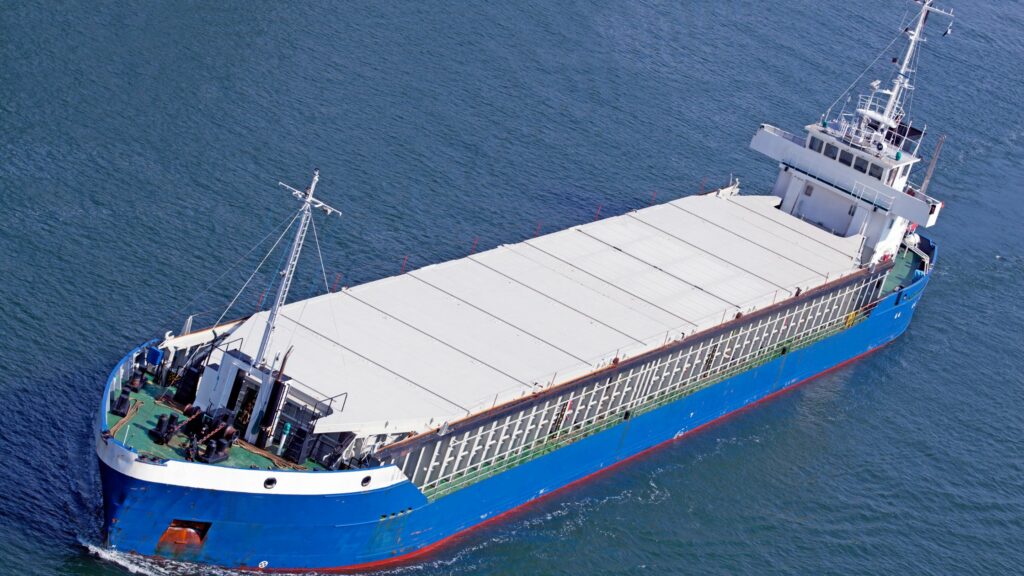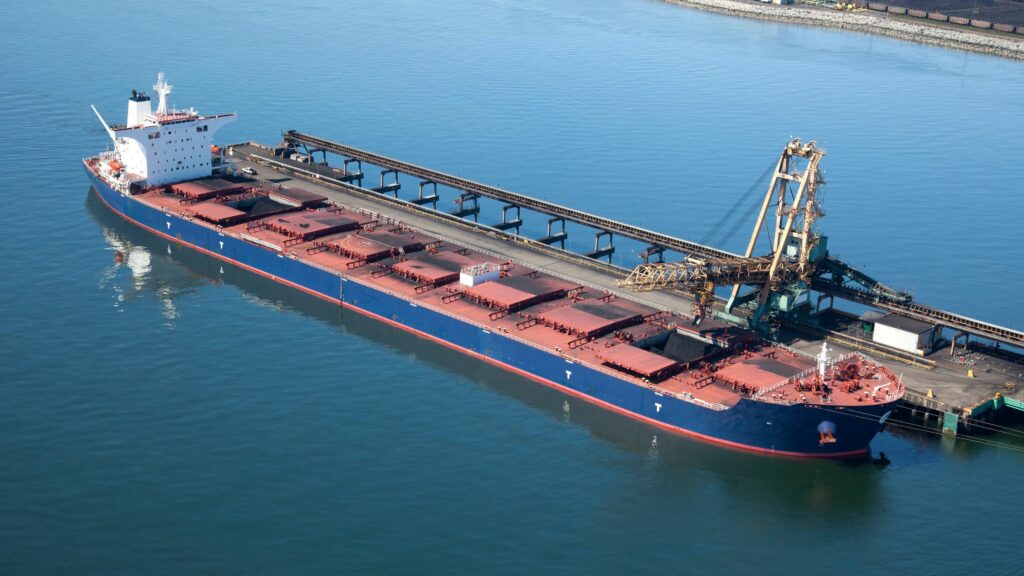Physical Address
304 North Cardinal St.
Dorchester Center, MA 02124

Ship chartering offers unparalleled flexibility and customization for the transportation of bulk commodities, setting it apart from other shipping methods. This distinctive feature positions ship chartering as an essential service, providing tailored solutions that meet the specific needs of charterers and shipowners alike.
Ship chartering is diverse, encompassing various types of charters such as Bareboat charter, Time Charter, Voyage Charter, and Contract of Affreightment, each known for their unique benefits and suitability for different shipping requirements and required period of time. Single Trip Time Charters and Spot Charters offer options for those seeking short-term solutions, while Long-Term Charters and Volume Contracts cater to businesses with ongoing, predictable shipping needs.
Each charter type comes with its own set of considerations regarding cost, flexibility, freight rates, and operational requirements, highlighting the importance of understanding these nuances. The subsequent sections will explore these aspects in detail, providing a comprehensive overview of ship chartering and its significance in the global shipping industry.
Ship chartering is a specialized service within the shipping industry, enabling the rental of a vessel and its crew by a charterer. This arrangement is governed by a legal framework known as a charter party agreement, which outlines the terms between the shipowner and the charterer. It offers a flexible and cost-effective solution for the transportation of goods across the sea, eliminating the need for the charterer to own the vessels directly and ultimately having affordable freight rates.
This service is particularly valuable to sectors involved in commodity trading and bulk shipping, providing access to a diverse fleet of vessels tailored to specific cargo requirements. Whether it’s for transporting essential raw materials like coal, oil, and grain, or for handling specialized cargoes that demand unique vessel features, ship chartering plays a pivotal role in facilitating global trade. It connects charterers with the right ships, ensuring their transportation needs are met efficiently and effectively.
Companies opt for ship chartering to leverage the cost-effectiveness and flexibility it brings to transporting bulk goods across the globe. Chartering ships allows businesses to respond swiftly to market demands, without the substantial investment and long-term obligations associated with owning a fleet. This level of adaptability is particularly beneficial in the commodity trading sector, where the capacity to efficiently move large volumes of goods can greatly influence a company’s bottom line.
Furthermore, this chartering process facilitates access to specialized vessels tailored for various cargo types, ensuring that commodities ranging from liquid and dry bulk to oversized machinery are transported in the most appropriate, safe, and efficient way possible during the charter period. This versatility is indispensable, supporting a company’s operational needs in both short-term market opportunities and in fulfilling long-term contractual commitments, making it one of the most common types of transport for cargo owners. In summary, ship chartering presents a strategic advantage by marrying economic efficiency with operational flexibility, positioning it as a top choice for companies aiming to refine their shipping and logistics strategies.
Chartering ships stands out for its cost-effectiveness in the bulk transport of goods, sidestepping the high costs associated with fleet ownership, operating costs, crew cost, capital cost, and maintenance. By opting to charter, businesses can significantly reduce their overhead by paying only for the vessel capacity and duration needed, aligning their shipping costs with market dynamics and cargo volume fluctuations, even using different types of vessels with a substantial reduction in the operational risks. This financial adaptability is especially beneficial for industries that experience irregular or seasonal shipping volumes, allowing for more strategic allocation of resources and optimization of voyage costs.
The flexibility offered by ship chartering in operational planning and execution is unparalleled. Companies and cargo owners have the liberty to select from a range of charter types voyage charters for single journeys or time charters for extended periods customizing the service to their exact requirements. This flexibility not only covers the duration and type of charter but also extends to scheduling and routing, enabling businesses to swiftly adapt to market shifts or capitalize on emerging opportunities, reduce longterm operational risks, and decrease the financial responsibility.
Such operational agility is invaluable, offering businesses the freedom to refine their shipping strategies in the fast-paced global market, unencumbered by the limitations of fleet ownership. and their fixed operating expenses.
One of the key benefits of ship chartering is the access to specialized vessels, which ensures that all types of cargo, from liquid and dry bulk to heavy or oversized equipment, are transported in vessels that are optimally suited, safe, and efficient for the task. Chartering allows companies to handpick vessels equipped with specific features necessary for their cargo be it refrigeration for perishable goods or reinforced decks for heavy loads without the substantial investment required to own a diverse fleet. This advantage not only enhances operational efficiency but also ensures the integrity and safety of the cargo, catering to the varied shipping requirements of different industries.
The ship chartering industry caters to a wide range of shipping requirements through various charter types, each offering unique benefits. Here’s a detailed look into these charter types, including specific scenarios where they are most advantageous:
| Charter Type | Description | Ideal for | Example Scenario |
|---|---|---|---|
| Bareboat Charter | Charterer takes control over the vessel without a crew. | Companies with operational expertise looking to expand their fleet temporarily. | A construction company needing a vessel for transporting heavy machinery for a specific project duration. |
| Time Charter | Vessel is rented for a specific period; shipowner handles the crew and maintenance. | Operations requiring flexibility in cargo volume and destinations over time. | An oil company securing a tanker for seasonal operations to match fluctuating production levels. |
| Trip Time Charter | A variant of Time Charter focused on a single, specific journey. | Short-term, specific route requirements without long-term commitment. | Transporting a one-off shipment of agricultural products during harvest season. |
| Voyage Charter | For transporting cargo from one location to another, costs calculated per voyage. | Single, high-value shipments or when cargo volume matches exactly the vessel’s capacity. | Shipping a full load of crude oil from the Middle East to refineries in Asia. |
| Consecutive Voyage Charter | Covers multiple voyages under one agreement. | Regular, bulk shipments of commodities. | A grain exporter shipping multiple cargoes of grain from the US to Europe over a harvest season. |
| Spot Charter | Designed for single, one-off voyages. | Immediate shipping needs, often influenced by market conditions. | Emergency shipment of medical supplies in response to a sudden demand spike. |
| Contract of Affreightment (COA) | Multiple shipments over time without specifying vessels. | Companies with consistent bulk shipping needs over a period. | A steel manufacturer regularly transporting iron ore from mining sites to processing facilities. |
| Hybrid Charter | Combines elements of various charter types to meet specific needs. | Complex shipping requirements that don’t fit standard charter types. | A multinational corporation with diverse, fluctuating shipping needs across different regions. |
Several key factors significantly influence the cost of chartering a ship, each contributing to the final charter rate. These factors include the ship’s size and type, the duration of the charter, and the dynamics of market demand and supply. Here, we delve into how these elements affect chartering costs, incorporating recent data and trends to provide a concrete understanding of the shipping market’s impact on charter rates.

The size and type of the ship are pivotal in determining chartering costs. Vessels designed for specific cargo types, such as those with liquid handling facilities or refrigeration units, command higher rates due to their specialized capabilities.
Larger ships typically incur higher charter rates, reflecting their enhanced cargo capacity and operational efficiency. This cost factor is balanced by the ability to transport larger quantities of goods, leveraging economies of scale.
The charter’s duration directly influences its overall cost. Short-term charters offer flexibility but may carry a premium, whereas longer charters tend to be more cost-effective, providing reduced rates for extended use.
Market demand and supply dynamics play a crucial role in determining charter rates. High demand or low supply can increase costs, while an oversupply of ships or reduced demand can lead to lower rates.
Charter rates and fuel prices are inherently volatile, fluctuating with market conditions. This volatility requires strategic planning and cost management to navigate effectively. That is one of the main downsides of chartering, where one is not in complete control of the vessel nor its prices. To illustrate the impact of market demand and supply on charter rates, and how fuel price changes have historically affected chartering costs, the following table provides a detailed overview:
| Factor | Description | Impact Example | Recent Trend/Event |
|---|---|---|---|
| Market Demand and Supply | Balance between available shipping capacity and demand for transport services. | High demand during global events can lead to rate increases. | During the COVID-19 pandemic, demand for shipping surged, causing charter rates to spike due to limited availability. |
| Fuel Prices | Cost of fuel, a significant operational expense for ships. | Rising oil prices lead to higher charter costs. | In the aftermath of geopolitical tensions in oil-producing regions, fuel prices increased, subsequently raising the operational costs of chartering. |
A charter party agreement lays the foundation for the contractual relationship between the shipowner and the charterer, detailing the key terms and conditions that govern their engagement, also called the charter party terms. Central to this charter contract are provisions specifying the duration of the charter, payment terms, and the delivery location for the vessel, ensuring all parties have a clear understanding of the charter’s scope and expectations. The charter party terms stated in the agreement also clearly outline the responsibilities of the charterer and the shipowner, delineating who bears the cost for operational expenses, maintenance, and insurance.
This clear division of responsibilities is essential for preventing misunderstandings and disputes during the charter period. Moreover, the charter party agreement includes detailed clauses on maintenance, operations, and insurance obligations, protecting the interests of both parties. By establishing explicit expectations regarding the vessel’s condition, operational limits, and liability coverage, the agreement serves as a comprehensive guide for managing the chartering arrangement, ensuring regulatory compliance, operational efficiency, and risk mitigation.
The key charter party terms and conditions within a charter party agreement establish the foundational elements of the charter, including the specific type of charter, the rights, and obligations of each party, and the overall structure of the contractual relationship. These terms ensure a mutual understanding and a clear path forward for both parties.
Essential aspects such as the duration of the charter, payment terms, and the delivery location of the vessel are precisely defined. Setting out these details helps to manage expectations regarding the timeline of the charter, the financial arrangements for payment, and the logistics of where and how the vessel will be transferred, fostering transparency and efficiency.
The charter party agreement clearly outlines the responsibilities of the charterer and the shipowner, specifying who will bear the costs for operational expenses, any additional costs, periodic costs, cost of loading, vessel maintenance, and crew management. This clarity is vital for ensuring each party knows their duties, contributing to a smooth and dispute-free charter operation, in other words, that the agreement has cost predictability to it to the charterer. The contracts of affreightment, also known as COA, must ensure total clarity in the clauses, conditions, flexibility in scheduling, conditions con cargo damage, arbitration clauses, destination port, discharge port, applicable maritime regulations, time limits, hire rates or daily hire rate, agreed-upon period, safety standards, freight period, crew-realted costs, cargo handling costs (if applicable), charter obligations, demurrage clauses, amongst other aspects that define with clarity all the charter obligations and costs, and therefore rule out any sort of cost uncertainty for both parties as per each party’s risk tolerance.
Detailed stipulations regarding vessel maintenance, operations, insurance obligations or any additional costs, are also a critical part of the agreement. These sections address the upkeep of the vessel, operational guidelines, and the necessary insurance coverage to safeguard against damages or liabilities. By clearly defining these obligations, the agreement ensures the vessel is maintained in good condition, operated within safe parameters, and fully covered by insurance, protecting the interests of both the charterer and the shipowner throughout the charter period and also provides cost predictability to both parties.
Understanding the complexities of ship chartering involves confronting several common challenges that can significantly impact operations. These include legal and regulatory compliance, the risk of delay and detention due to port congestion, and the ever-present specter of market volatility. Each of these challenges requires strategic foresight, comprehensive due diligence, and a flexible approach to mitigate effectively.
The challenge of legal and regulatory compliance is formidable, given the vast and evolving landscape of international and local maritime regulations and laws. Ensuring operations adhere to these regulations demands constant vigilance and a proactive management strategy to avoid legal complications and ensure smooth chartering operations.
The diversity and fluid nature of international and local maritime laws create a complex legal environment for ship chartering. Ship charterers and shipowners must understand the maritime regulations and laws applicable to the contract of affreightment they will use in order to avoid unforeseen operational costs, since this labyrinth of legal standards, requires adaptability and a thorough understanding of the legal implications to which the operation is subject.
Risk of delay and detention is a significant challenge, often exacerbated by port congestion and customs issues. Delays can disrupt schedules, leading to financial losses and operational inefficiencies. Efficient logistics planning and the ability to respond swiftly to unforeseen obstacles are crucial in minimizing these risks. Sometimes a clause for rate renegotiation is included as per the risk tolerance of the parties engaging in the contract, where the demurrage clauses will come into effect in case of delay, but will not be so harsh on the ship charterers.
| Location | Event | Impact |
|---|---|---|
| Los Angeles/Long Beach, USA | Unprecedented surge in demand post-COVID-19 lockdowns | Severe delays, with ships waiting weeks to berth, disrupting global supply chains. |
| Suez Canal, Egypt | Blockage by the Ever Given, March 2021 | Global trade disruption, highlighting the vulnerability of key chokepoints and the cascading effects on shipping schedules worldwide. |
Market volatility introduces unpredictability into charter rates and fuel prices, affecting the financial planning and stability of charter agreements. Strategic planning and risk management are essential to navigate the economic landscape shaped by market fluctuations. Demand for charters tend to be seasonal and so this industry is not immune to market fluctuations, so it is advisable to plan ahead and close the charter terms beforehand in order to avoid financial risk by paying a higher daily hire rate to the ship owners in order to get a suitable vessel.
| Event | Impact |
|---|---|
| Global Financial Crisis, 2008 | Sharp decline in demand for shipping, leading to a significant drop in charter rates. |
| Geopolitical tensions in oil-producing regions | Fluctuations in fuel prices, affecting operational costs and charter rates. |

To understand the market fluctuations and mitigate the financial risks of ship chartering, companies can employ strategies like comprehensive due diligence, compliance with regulations, insurance coverage, and expert consultancy. Comprehensive due diligence is essential, focusing on assessing the shipowner’s credibility, inspecting the vessel’s condition, and thoroughly reviewing the charter party agreement. This step is crucial for identifying and addressing potential issues proactively, where the compliance costs must also be included in the overall freight rates and logistic costs of the project.
Securing robust insurance coverage provides a critical safety net, safeguarding against possible damages and liabilities during the charter. This coverage is a cornerstone of risk management, offering financial protection against unexpected incidents. Furthermore, tapping into expert consultancy delivers insights into the latest market trends, legal nuances, and best operational practices.
Experts in maritime law, shipping logistics, and market dynamics can equip companies with the knowledge to make informed decisions, smoothly navigate the shipping industry’s complexities, and anticipate challenges. By integrating these strategies, companies can establish a solid foundation for risk management in ship chartering, ensuring more secure and efficient operations.
Comprehensive due diligence acts as the cornerstone of risk mitigation in ship chartering. It encompasses a thorough investigation into the charter’s various facets, focusing on the shipowner’s credibility and the charter agreement’s specifics to ensure a secure and transparent arrangement.
A pivotal aspect of due diligence is evaluating the shipowner’s reliability and the vessel’s condition. This evaluation includes scrutinizing the shipowner’s financial health, operational history, and conducting a comprehensive inspection of the vessel, ensuring the charterer engages in a dependable and safe chartering venture.
Obtaining insurance coverage is indispensable for shielding against unforeseen damages and liabilities. This protective measure offers financial security, covering unexpected incidents and mitigating potential financial repercussions.
Protection against damages and liabilities through insurance is crucial, not only for safeguarding the charterer’s financial interests but also for ensuring regulatory compliance, providing a layer of security throughout the chartering process. It is also important to take into account port charges or any unforeseen cost related to demurrage, extra fuel costs, crew costs, etc. in order to have a price-wise budget for any ship chartering operation.
Utilizing expert consultancy with companies like BULKARGO provides access to a wealth of knowledge on the nuanced aspects of ship chartering. Specialists in maritime law, market analysis, and shipping logistics offer strategic advice, aiding companies in navigating the complex shipping industry landscape.
Guidance on market trends and legal aspects, offered by expert consultants, is invaluable for informed decision-making. Keeping abreast of the latest market dynamics and understanding the intricate legal framework helps in optimizing strategic planning and bolstering risk management strategies.